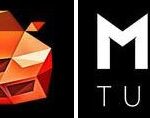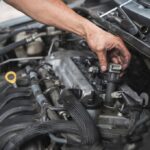For any car owner keen on maintaining their vehicle, understanding what’s happening under the hood is crucial. Modern vehicles are complex machines, and when something goes wrong, the engine control unit (ECU) often logs fault codes. This is where auto drive OBD2 and EOBD code readers come into play, transforming from a niche tool to a must-have for DIY mechanics.
Are these code readers genuinely worth the investment? In short, yes. They offer the quickest route to diagnosing car troubles. Without an OBD2 or EOBD reader, identifying a fault code typically means a trip to a professional garage. Considering that labor costs at independent garages can average around $60-$100 per hour, the cost of a code reader can easily be recouped with a single use. By pairing an OBD fault code reader with resources like Haynes AutoFix online guides, you gain the ability to diagnose and fix many common mechanical and electrical issues right at home, using basic tools and saving significant money.
The market offers a wide array of OBD readers, from basic to advanced models, but their core function remains consistent: communicating with your car’s computer to pinpoint problems. Prices range from budget-friendly options around $20 to professional-grade tools costing hundreds. Regardless of price point, a competent OBD2/EOBD reader should:
- Establish communication with your vehicle’s system.
- Accurately read diagnostic trouble codes (DTCs).
- Provide the ability to clear these fault codes after repair.
It’s important to note that while most standard OBD scanners can read and clear engine fault codes, they often won’t handle tasks like turning off service lights or resetting maintenance monitors for systems like ABS or SRS. However, guides like Haynes AutoFix can provide step-by-step instructions for many of these procedures, complementing the functionality of your OBD reader.
Search for Haynes AutoFix for my car now
Understanding OBD2 and EOBD Systems
OBD stands for On-Board Diagnostics, and it refers to a standardized port in your car that allows access to the vehicle’s diagnostic information. This port, resembling a small, trapezoidal connector, has been mandatory for all petrol passenger cars sold in Europe since January 1, 2001, and for diesel cars since 2004. This 16-pin connector is known as OBD2 in most parts of the world and EOBD (European On-Board Diagnostics) in Europe. Functionally, OBD2 and EOBD are largely the same.
The OBD2/EOBD port not only provides a communication interface but also power. This eliminates the need for external power sources for most code readers, as they draw power directly from the vehicle’s electrical system through this port. This makes using these devices straightforward and convenient for quick diagnostics.

